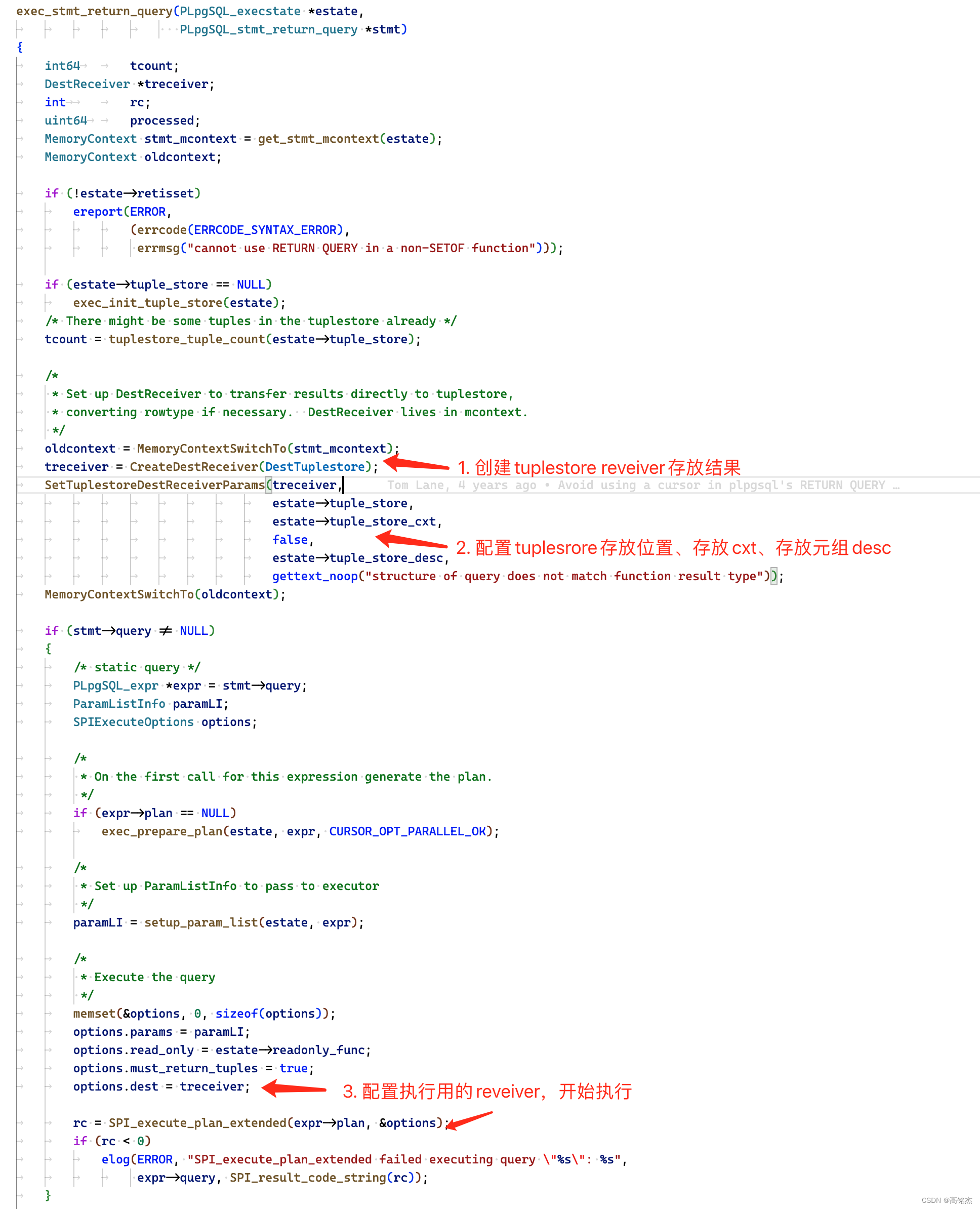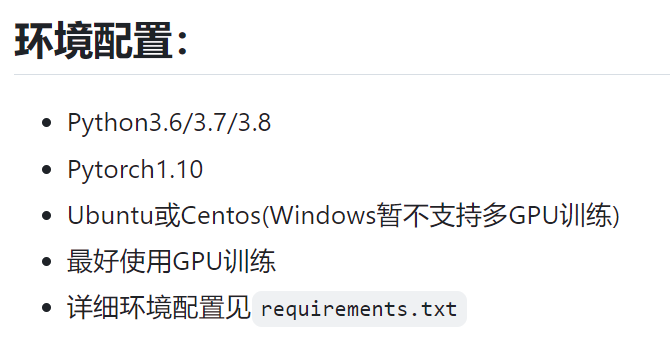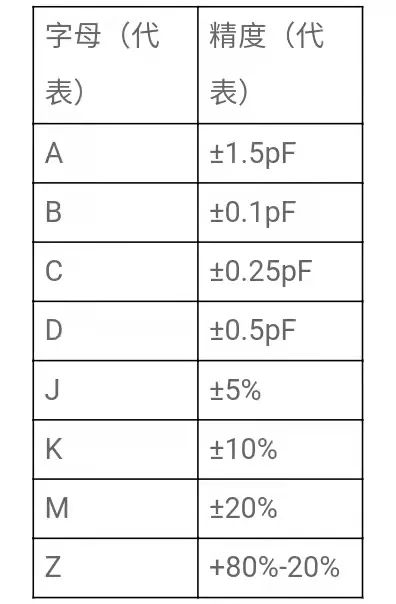epoll概述
epoll是Linux内核为处理大批量文件描述符而作了改进的poll,它能显著提高程序在大量并发连接中只有少量活跃的情况下的系统CPU利用率。
epoll可以理解为event poll,它是一种事件驱动的I/O模型,可以用来替代传统的select和poll模型。epoll的优势在于它可以同时处理大量的文件描述符,而且不会随着文件描述符数量的增加而降低效率。
epoll的实现机制是通过内核与用户空间共享一个事件表,这个事件表中存放着所有需要监控的文件描述符以及它们的状态,当文件描述符的状态发生变化时,内核会将这个事件通知给用户空间,用户空间再根据事件类型进行相应的处理。

epoll的接口和工作模式相对于select和poll更加简单易用,因此在高并发场景下被广泛使用。 以下是三个核心接口:
int epoll_create(int size);
创建一个epoll的句柄,size用来告诉内核这个监听的数目一共有多大。这个参数不同于select()中的第一个参数,给出最大监听的fd+1的值。
需要注意的是,当创建好epoll句柄后,它就是会占用一个fd值,在linux下如果查看/proc/进程id/fd/,是能够看到这个fd的,所以在使用完epoll后,必须调用close()关闭,否则可能导致fd被耗尽。
int epoll_ctl(int epfd, int op, int fd, struct epoll_event *event);
epoll的事件注册函数,它不同与select()是在监听事件时告诉内核要监听什么类型的事件,而是在这里先注册要监听的事件类型。第一个参数是epoll_create()的返回值,第二个参数表示动作,用三个宏来表示:
EPOLL_CTL_ADD:注册新的fd到epfd中;
EPOLL_CTL_MOD:修改已经注册的fd的监听事件;
EPOLL_CTL_DEL:从epfd中删除一个fd;
第三个参数是需要监听的fd,第四个参数是告诉内核需要监听什么事,struct epoll_event结构如下:
struct epoll_event {
__uint32_t events; /* Epoll events */
epoll_data_t data; /* User data variable */
};
events可以是以下几个宏的集合:
EPOLLIN :表示对应的文件描述符可以读(包括对端SOCKET正常关闭);
EPOLLOUT:表示对应的文件描述符可以写;
EPOLLPRI:表示对应的文件描述符有紧急的数据可读(这里应该表示有带外数据到来);
EPOLLERR:表示对应的文件描述符发生错误;
EPOLLHUP:表示对应的文件描述符被挂断;
EPOLLET: 将EPOLL设为边缘触发(Edge Triggered)模式,这是相对于水平触发(Level Triggered)来说的。
EPOLLONESHOT:只监听一次事件,当监听完这次事件之后,如果还需要继续监听这个socket的话,需要再次把这个socket加入到EPOLL队列里
int epoll_wait(int epfd, struct epoll_event * events, int maxevents, int timeout);
等待事件的产生,类似于select()调用。参数events用来从内核得到事件的集合,maxevents告之内核这个events有多大,这个maxevents的值不能大于创建epoll_create()时的size
在4.1.2内核里面,epoll_create的size没有什么用),参数timeout是超时时间(毫秒,0会立即返回,小于0时将是永久阻塞)。该函数返回需要处理的事件数目,如返回0表示已超时
epoll相比select/poll的优势:
select/poll每次调用都要传递所要监控的所有fd给select/poll系统调用(这意味着每次调用都要将fd列表从用户态拷贝到内核态,当fd数目很多时,这会造成低效)。而每次调用epoll_wait时(作用相当于调用select/poll),不需要再传递fd列表给内核,因为已经在epoll_ctl中将需要监控的fd告诉了内核(epoll_ctl不需要每次都拷贝所有的fd,只需要进行增量式操作)。
所以,在调用epoll_create之后,内核已经在内核态开始准备数据结构存放要监控的fd了。每次epoll_ctl只是对这个数据结构进行简单的维护。
select/poll一个致命弱点就是当你拥有一个很大的socket集合,不过由于网络延时,任一时间只有部分的socket是"活跃"的,但是select/poll每次调用都会线性扫描全部的集合,导致效率呈现线性下降。但epoll不存在这个问题,它只会对"活跃"的socket进行操作.
当调用epoll_ctl往里塞入百万个fd时,epoll_wait仍然可以飞快的返回,并有效的将发生事件的fd给我们用户。这是由于我们在调用epoll_create时,内核除了帮我们在epoll文件系统里建了个file结点,在内核cache里建了个红黑树用于存储以后epoll_ctl传来的fd外,还会再建立一个list链表,用于存储准备就绪的事件,当epoll_wait调用时,仅仅观察这个list链表里有没有数据即可。
有数据就返回,没有数据就sleep,等到timeout时间到后即使链表没数据也返回。所以epoll_wait非常高效。通常情况下即使我们要监控百万计的fd,大多一次也只返回很少量的准备就绪fd而已,epoll_wait仅需要从内核态copy少量的fd到用户态而已。
当执行epoll_ctl时,除了把fd放到epoll文件系统里file对象对应的红黑树上之外,还会给内核中断处理程序注册一个回调函数。
原理图解



epoll编程流程如下:

源码分析
epoll相关的内核代码在fs/eventpoll.c文件中,下面分别分析epoll_create、epoll_ctl和epoll_wait三个函数在内核中的实现,分析所用linux内核源码为4.1.2版本。
epoll_create
epoll_create用于创建一个epoll的句柄,其在内核的系统实现如下:
调用链: sys_epoll_create:
SYSCALL_DEFINE1(epoll_create, int, size)
{
if (size <= 0)
return -EINVAL;
return sys_epoll_create1(0);
}
在调用epoll_create时,传入的size参数,仅仅是用来判断是否小于等于0,之后再也没有其他用处。整个函数就3行代码,真正的工作还是放在sys_epoll_create1函数中。
调用链: sys_epoll_create -> sys_epoll_create1:
SYSCALL_DEFINE1(epoll_create1, int, flags)
{
int error, fd;
struct eventpoll *ep = NULL;
struct file *file;
/* Check the EPOLL_* constant for consistency. */
BUILD_BUG_ON(EPOLL_CLOEXEC != O_CLOEXEC);
if (flags & ~EPOLL_CLOEXEC)
return -EINVAL;
/*
* Create the internal data structure ("struct eventpoll").
*/
error = ep_alloc(&ep);
if (error < 0)
return error;
/*
* Creates all the items needed to setup an eventpoll file. That is,
* a file structure and a free file descriptor.
*/
fd = get_unused_fd_flags(O_RDWR | (flags & O_CLOEXEC));
if (fd < 0)
{
error = fd;
goto out_free_ep;
}
file = anon_inode_getfile("[eventpoll]", &eventpoll_fops, ep,
O_RDWR | (flags & O_CLOEXEC));
if (IS_ERR(file))
{
error = PTR_ERR(file);
goto out_free_fd;
}
ep->file = file;
fd_install(fd, file);
return fd;
out_free_fd:
put_unused_fd(fd);
out_free_ep:
ep_free(ep);
return error;
}
sys_epoll_create1 函数首先调用ep_alloc函数申请一个eventpoll结构,并且初始化该结构的成员:
调用链: sys_epoll_create -> sys_epoll_create1 -> ep_alloc:
static int ep_alloc(struct eventpoll **pep)
{
int error;
struct user_struct *user;
struct eventpoll *ep;
user = get_current_user();
error = -ENOMEM;
ep = kzalloc(sizeof(*ep), GFP_KERNEL);
if (unlikely(!ep))
goto free_uid;
spin_lock_init(&ep->lock);
mutex_init(&ep->mtx);
init_waitqueue_head(&ep->wq);
init_waitqueue_head(&ep->poll_wait);
INIT_LIST_HEAD(&ep->rdllist);
ep->rbr = RB_ROOT;
ep->ovflist = EP_UNACTIVE_PTR;
ep->user = user;
*pep = ep;
return 0;
free_uid:
free_uid(user);
return error;
}
接下来调用get_unused_fd_flags函数,在本进程中申请一个未使用的fd文件描述符。
调用链: sys_epoll_create -> sys_epoll_create1 -> ep_alloc -> get_unused_fd_flags:
int get_unused_fd_flags(unsigned flags)
{
return __alloc_fd(current->files, 0, rlimit(RLIMIT_NOFILE), flags);
}
linux内核中,current是个宏,返回的是一个task_struct结构(称之为进程描述符)的变量,表示的是当前进程,进程打开的文件资源保存在进程描述符的files成员里面,所以current->files返回的当前进程打开的文件资源。
rlimit(RLIMIT_NOFILE) 函数获取的是当前进程可以打开的最大文件描述符数,这个值可以设置,默认是1024。
__alloc_fd的工作是为进程在[start,end)之间(这里start为0, end为进程可以打开的最大文件描述符数)分配一个可用的文件描述符,这里就不继续深入下去了。
然后,epoll_create1会调用anon_inode_getfile,创建一个file结构:
调用链: sys_epoll_create -> sys_epoll_create1 -> anon_inode_getfile:
/**
* anon_inode_getfile - creates a new file instance by hooking it up to an
* anonymous inode, and a dentry that describe the "class"
* of the file
*
* @name: [in] name of the "class" of the new file
* @fops: [in] file operations for the new file
* @priv: [in] private data for the new file (will be file's private_data)
* @flags: [in] flags
*
* Creates a new file by hooking it on a single inode. This is useful for files
* that do not need to have a full-fledged inode in order to operate correctly.
* All the files created with anon_inode_getfile() will share a single inode,
* hence saving memory and avoiding code duplication for the file/inode/dentry
* setup. Returns the newly created file* or an error pointer.
*/
struct file *anon_inode_getfile(const char *name,
const struct file_operations *fops,
void *priv, int flags)
{
struct qstr this;
struct path path;
struct file *file;
if (IS_ERR(anon_inode_inode))
return ERR_PTR(-ENODEV);
if (fops->owner && !try_module_get(fops->owner))
return ERR_PTR(-ENOENT);
/*
* Link the inode to a directory entry by creating a unique name
* using the inode sequence number.
*/
file = ERR_PTR(-ENOMEM);
this.name = name;
this.len = strlen(name);
this.hash = 0;
path.dentry = d_alloc_pseudo(anon_inode_mnt->mnt_sb, &this);
if (!path.dentry)
goto err_module;
path.mnt = mntget(anon_inode_mnt);
ihold(anon_inode_inode);
d_instantiate(path.dentry, anon_inode_inode);
file = alloc_file(&path, OPEN_FMODE(flags), fops);
if (IS_ERR(file))
goto err_dput;
file->f_mapping = anon_inode_inode->i_mapping;
file->f_flags = flags & (O_ACCMODE | O_NONBLOCK);
file->private_data = priv;
return file;
err_dput:
path_put(&path);
err_module:
module_put(fops->owner);
return file;
}
anon_inode_getfile函数中首先会alloc一个file结构和一个dentry结构,然后将该file结构与一个匿名inode节点anon_inode_inode挂钩在一起,这里要注意的是,在调用anon_inode_getfile函数申请file结构时,传入了前面申请的eventpoll结构的ep变量,申请的file->private_data会指向这个ep变量,同时,在anon_inode_getfile函数返回来后,ep->file会指向该函数申请的file结构变量。
简要说一下file/dentry/inode,当进程打开一个文件时,内核就会为该进程分配一个file结构,表示打开的文件在进程的上下文,然后应用程序会通过一个int类型的文件描述符来访问这个结构,实际上内核的进程里面维护一个file结构的数组,而文件描述符就是相应的file结构在数组中的下标。
dentry结构(称之为“目录项”)记录着文件的各种属性,比如文件名、访问权限等,每个文件都只有一个dentry结构,然后一个进程可以多次打开一个文件,多个进程也可以打开同一个文件,这些情况,内核都会申请多个file结构,建立多个文件上下文。但是,对同一个文件来说,无论打开多少次,内核只会为该文件分配一个dentry。所以,file结构与dentry结构的关系是多对一的。
同时,每个文件除了有一个dentry目录项结构外,还有一个索引节点inode结构,里面记录文件在存储介质上的位置和分布等信息,每个文件在内核中只分配一个inode。 dentry与inode描述的目标是不同的,一个文件可能会有好几个文件名(比如链接文件),通过不同文件名访问同一个文件的权限也可能不同。dentry文件所代表的是逻辑意义上的文件,记录的是其逻辑上的属性,而inode结构所代表的是其物理意义上的文件,记录的是其物理上的属性。dentry与inode结构的关系是多对一的关系。
最后,epoll_create1调用fd_install函数,将fd与file交给关联在一起,之后,内核可以通过应用传入的fd参数访问file结构,不继续深入下去了。
总结epoll_create函数所做的事: 调用epoll_create后,在内核中分配一个eventpoll结构和代表epoll文件的file结构,并且将这两个结构关联在一块,同时,返回一个也与file结构相关联的epoll文件描述符fd。
当应用程序操作epoll时,需要传入一个epoll文件描述符fd,内核根据这个fd,找到epoll的file结构,然后通过file,获取之前epoll_create申请eventpoll结构变量,epoll相关的重要信息都存储在这个结构里面。接下来,所有epoll接口函数的操作,都是在eventpoll结构变量上进行的。
所以,epoll_create的作用就是为进程在内核中建立一个从epoll文件描述符到eventpoll结构变量的通道。
epoll_ctl
epoll_ctl接口的作用是添加/修改/删除文件的监听事件,内核代码如下:
/*
* The following function implements the controller interface for
* the eventpoll file that enables the insertion/removal/change of
* file descriptors inside the interest set.
*/
SYSCALL_DEFINE4(epoll_ctl, int, epfd, int, op, int, fd,
struct epoll_event __user *, event)
{
int error;
int full_check = 0;
struct fd f, tf;
struct eventpoll *ep;
struct epitem *epi;
struct epoll_event epds;
struct eventpoll *tep = NULL;
error = -EFAULT;
if (ep_op_has_event(op) &&
copy_from_user(&epds, event, sizeof(struct epoll_event)))
goto error_return;
error = -EBADF;
f = fdget(epfd);
if (!f.file)
goto error_return;
/* Get the "struct file *" for the target file */
tf = fdget(fd);
if (!tf.file)
goto error_fput;
/* The target file descriptor must support poll */
error = -EPERM;
if (!tf.file->f_op->poll)
goto error_tgt_fput;
/* Check if EPOLLWAKEUP is allowed */
if (ep_op_has_event(op))
ep_take_care_of_epollwakeup(&epds);
/*
* We have to check that the file structure underneath the file descriptor
* the user passed to us _is_ an eventpoll file. And also we do not permit
* adding an epoll file descriptor inside itself.
*/
error = -EINVAL;
if (f.file == tf.file || !is_file_epoll(f.file))
goto error_tgt_fput;
/*
* epoll adds to the wakeup queue at EPOLL_CTL_ADD time only,
* so EPOLLEXCLUSIVE is not allowed for a EPOLL_CTL_MOD operation.
* Also, we do not currently supported nested exclusive wakeups.
*/
if (ep_op_has_event(op) && (epds.events & EPOLLEXCLUSIVE))
{
if (op == EPOLL_CTL_MOD)
goto error_tgt_fput;
if (op == EPOLL_CTL_ADD && (is_file_epoll(tf.file) ||
(epds.events & ~EPOLLEXCLUSIVE_OK_BITS)))
goto error_tgt_fput;
}
ep = f.file->private_data;
mutex_lock_nested(&ep->mtx, 0);
if (op == EPOLL_CTL_ADD)
{
if (!list_empty(&f.file->f_ep_links) ||
is_file_epoll(tf.file))
{
full_check = 1;
mutex_unlock(&ep->mtx);
mutex_lock(&epmutex);
if (is_file_epoll(tf.file))
{
error = -ELOOP;
if (ep_loop_check(ep, tf.file) != 0)
{
clear_tfile_check_list();
goto error_tgt_fput;
}
}
else
list_add(&tf.file->f_tfile_llink,
&tfile_check_list);
mutex_lock_nested(&ep->mtx, 0);
if (is_file_epoll(tf.file))
{
tep = tf.file->private_data;
mutex_lock_nested(&tep->mtx, 1);
}
}
}
epi = ep_find(ep, tf.file, fd);
error = -EINVAL;
switch (op)
{
case EPOLL_CTL_ADD:
if (!epi)
{
epds.events |= POLLERR | POLLHUP;
error = ep_insert(ep, &epds, tf.file, fd, full_check);
}
else
error = -EEXIST;
if (full_check)
clear_tfile_check_list();
break;
case EPOLL_CTL_DEL:
if (epi)
error = ep_remove(ep, epi);
else
error = -ENOENT;
break;
case EPOLL_CTL_MOD:
if (epi)
{
if (!(epi->event.events & EPOLLEXCLUSIVE))
{
epds.events |= POLLERR | POLLHUP;
error = ep_modify(ep, epi, &epds);
}
}
else
error = -ENOENT;
break;
}
if (tep != NULL)
mutex_unlock(&tep->mtx);
mutex_unlock(&ep->mtx);
error_tgt_fput:
if (full_check)
mutex_unlock(&epmutex);
fdput(tf);
error_fput:
fdput(f);
error_return:
return error;
}
op是对epoll操作的动作(添加/修改/删除事件),ep_op_has_event(op)判断是否不是删除操作,如果op != EPOLL_CTL_DEL为true,则需要调用copy_from_user函数将用户空间传过来的event事件拷贝到内核的epds变量中。只有删除操作,内核不需要使用进程传入的event事件。
接着连续调用两次fdget分别获取epoll文件和被监听文件(以下称为目标文件)的file结构变量(备注:该函数返回fd结构变量,fd结构包含file结构)。
接下来就是对参数的一些检查,出现如下情况,就可以认为传入的参数有问题,直接返回出错:
- 目标文件不支持poll操作
- 监听的目标文件就是epoll文件本身
- 用户传入的epoll文件(epfd代表的文件)并不是一个真正的epoll的文件
- 如果操作动作是修改操作,并且事件类型为EPOLLEXCLUSIVE,返回出错等等。
在ep里面,维护着一个红黑树,每次添加注册事件时,都会申请一个epitem结构的变量表示事件的监听项,然后插入ep的红黑树里面。在epoll_ctl里面,会调用ep_find函数从ep的红黑树里面查找目标文件表示的监听项,返回的监听项可能为空。
switch这块区域的代码就是整个epoll_ctl函数的核心,对op进行switch出来的有添加(EPOLL_CTL_ADD)、删除(EPOLL_CTL_DEL)和修改(EPOLL_CTL_MOD)三种情况。
这里以添加为例:为目标文件添加监控事件时,首先要保证当前ep里面还没有对该目标文件进行监听,如果存在,就返回-EEXIST错误。否则说明参数正常,然后先默认设置对目标文件的POLLERR和POLLHUP监听事件,然后调用ep_insert函数,将对目标文件的监听事件插入到ep维护的红黑树里面:
调用链: sys_epoll_ctl -> ep_insert
/*
* Must be called with "mtx" held.
*/
static int ep_insert(struct eventpoll *ep, struct epoll_event *event,
struct file *tfile, int fd, int full_check)
{
int error, revents, pwake = 0;
unsigned long flags;
long user_watches;
struct epitem *epi;
struct ep_pqueue epq;
user_watches = atomic_long_read(&ep->user->epoll_watches);
if (unlikely(user_watches >= max_user_watches))
return -ENOSPC;
if (!(epi = kmem_cache_alloc(epi_cache, GFP_KERNEL)))
return -ENOMEM;
/* Item initialization follow here ... */
INIT_LIST_HEAD(&epi->rdllink);
INIT_LIST_HEAD(&epi->fllink);
INIT_LIST_HEAD(&epi->pwqlist);
epi->ep = ep;
ep_set_ffd(&epi->ffd, tfile, fd);
epi->event = *event;
epi->nwait = 0;
epi->next = EP_UNACTIVE_PTR;
if (epi->event.events & EPOLLWAKEUP)
{
error = ep_create_wakeup_source(epi);
if (error)
goto error_create_wakeup_source;
}
else
{
RCU_INIT_POINTER(epi->ws, NULL);
}
/* Initialize the poll table using the queue callback */
epq.epi = epi;
init_poll_funcptr(&epq.pt, ep_ptable_queue_proc);
/*
* Attach the item to the poll hooks and get current event bits.
* We can safely use the file* here because its usage count has
* been increased by the caller of this function. Note that after
* this operation completes, the poll callback can start hitting
* the new item.
*/
revents = ep_item_poll(epi, &epq.pt);
/*
* We have to check if something went wrong during the poll wait queue
* install process. Namely an allocation for a wait queue failed due
* high memory pressure.
*/
error = -ENOMEM;
if (epi->nwait < 0)
goto error_unregister;
/* Add the current item to the list of active epoll hook for this file */
spin_lock(&tfile->f_lock);
list_add_tail_rcu(&epi->fllink, &tfile->f_ep_links);
spin_unlock(&tfile->f_lock);
/*
* Add the current item to the RB tree. All RB tree operations are
* protected by "mtx", and ep_insert() is called with "mtx" held.
*/
ep_rbtree_insert(ep, epi);
/* now check if we've created too many backpaths */
error = -EINVAL;
if (full_check && reverse_path_check())
goto error_remove_epi;
/* We have to drop the new item inside our item list to keep track of it */
spin_lock_irqsave(&ep->lock, flags);
/* record NAPI ID of new item if present */
ep_set_busy_poll_napi_id(epi);
/* If the file is already "ready" we drop it inside the ready list */
if ((revents & event->events) && !ep_is_linked(&epi->rdllink))
{
list_add_tail(&epi->rdllink, &ep->rdllist);
ep_pm_stay_awake(epi);
/* Notify waiting tasks that events are available */
if (waitqueue_active(&ep->wq))
wake_up_locked(&ep->wq);
if (waitqueue_active(&ep->poll_wait))
pwake++;
}
spin_unlock_irqrestore(&ep->lock, flags);
atomic_long_inc(&ep->user->epoll_watches);
if (pwake)
ep_poll_safewake(&ep->poll_wait);
return 0;
error_remove_epi:
spin_lock(&tfile->f_lock);
list_del_rcu(&epi->fllink);
spin_unlock(&tfile->f_lock);
rb_erase(&epi->rbn, &ep->rbr);
error_unregister:
ep_unregister_pollwait(ep, epi);
spin_lock_irqsave(&ep->lock, flags);
if (ep_is_linked(&epi->rdllink))
list_del_init(&epi->rdllink);
spin_unlock_irqrestore(&ep->lock, flags);
wakeup_source_unregister(ep_wakeup_source(epi));
error_create_wakeup_source:
kmem_cache_free(epi_cache, epi);
return error;
}
前文提到,对目标文件的监听是由一个epitem结构的监听项变量维护的,所以在ep_insert函数里面,首先调用kmem_cache_alloc函数,从slab分配器里面分配一个epitem结构监听项,然后对该结构进行初始化。接下来看ep_item_poll这个函数调用:
调用链: sys_epoll_ctl -> ep_insert -> ep_item_poll
static inline unsigned int ep_item_poll(struct epitem *epi, poll_table *pt)
{
pt->_key = epi->event.events;
return epi->ffd.file->f_op->poll(epi->ffd.file, pt) & epi->event.events;
}
ep_item_poll函数里面,调用目标文件的poll函数,这个函数针对不同的目标文件而指向不同的函数,如果目标文件为套接字的话,这个poll就指向sock_poll,而如果目标文件为tcp套接字来说,这个poll就是tcp_poll函数。
虽然poll指向的函数可能会不同,但是其作用都是一样的,就是获取目标文件当前产生的事件位,并且将监听项绑定到目标文件的poll钩子里面(最重要的是注册ep_ptable_queue_proc这个poll callback回调函数),这步操作完成后,以后目标文件产生事件就会调用ep_ptable_queue_proc回调函数。
接下来,调用list_add_tail_rcu将当前监听项添加到目标文件的f_ep_links链表里面,该链表是目标文件的epoll钩子链表,所有对该目标文件进行监听的监听项都会加入到该链表里面。
然后就是调用ep_rbtree_insert,将epi监听项添加到ep维护的红黑树里面。
调用链: sys_epoll_ctl -> ep_insert -> ep_rbtree_insert
static void ep_rbtree_insert(struct eventpoll *ep, struct epitem *epi)
{
int kcmp;
struct rb_node **p = &ep->rbr.rb_node, *parent = NULL;
struct epitem *epic;
while (*p)
{
parent = *p;
epic = rb_entry(parent, struct epitem, rbn);
kcmp = ep_cmp_ffd(&epi->ffd, &epic->ffd);
if (kcmp > 0)
p = &parent->rb_right;
else
p = &parent->rb_left;
}
rb_link_node(&epi->rbn, parent, p);
rb_insert_color(&epi->rbn, &ep->rbr);
}
上文提到,ep_insert有调用ep_item_poll去获取目标文件产生的事件位,在调用epoll_ctl前这段时间,可能会产生相关进程需要监听的事件,如果有监听的事件产生,(revents & event->events 为 true),并且目标文件相关的监听项没有链接到ep的准备链表rdlist里面的话,就将该监听项添加到ep的rdlist准备链表里面,rdlist链接的是该epoll描述符监听的所有已经就绪的目标文件的监听项。
如果有任务在等待产生事件时,就调用wake_up_locked函数唤醒所有正在等待的任务,处理相应的事件。当进程调用epoll_wait时,该进程就出现在ep的wq等待队列里面。
总结epoll_ctl函数: 该函数根据监听的事件,为目标文件申请一个监听项,并将该监听项挂到eventpoll结构的红黑树里面。
epoll_wait
epoll_wait等待事件的产生,内核代码如下:
sys_epoll_wait:
/*
* Implement the event wait interface for the eventpoll file. It is the kernel
* part of the user space epoll_wait(2).
*/
SYSCALL_DEFINE4(epoll_wait, int, epfd, struct epoll_event __user *, events,int, maxevents, int, timeout)
{
int error;
struct fd f;
struct eventpoll *ep;
/* The maximum number of event must be greater than zero */
if (maxevents <= 0 || maxevents > EP_MAX_EVENTS)
return -EINVAL;
/* Verify that the area passed by the user is writeable */
if (!access_ok(VERIFY_WRITE, events, maxevents * sizeof(struct epoll_event)))
return -EFAULT;
/* Get the "struct file *" for the eventpoll file */
f = fdget(epfd);
if (!f.file)
return -EBADF;
/*
* We have to check that the file structure underneath the fd
* the user passed to us _is_ an eventpoll file.
*/
error = -EINVAL;
if (!is_file_epoll(f.file))
goto error_fput;
ep = f.file->private_data;
/* Time to fish for events ... */
error = ep_poll(ep, events, maxevents, timeout);
error_fput:
fdput(f);
return error;
}
首先是对进程传进来的一些参数的检查:
- maxevents必须大于0并且小于EP_MAX_EVENTS,否则就返回-EINVAL;
- 内核必须有对events变量写文件的权限,否则返回-EFAULT;
- epfd代表的文件必须是个真正的epoll文件,否则返回-EBADF。
参数全部检查合格后,接下来就调用ep_poll函数进行真正的处理
调用链: sys_epoll_wait -> ep_poll:
static int ep_poll(struct eventpoll *ep, struct epoll_event __user *events,
int maxevents, long timeout)
{
int res = 0, eavail, timed_out = 0;
unsigned long flags;
u64 slack = 0;
wait_queue_t wait;
ktime_t expires, *to = NULL;
if (timeout > 0)
{
struct timespec64 end_time = ep_set_mstimeout(timeout);
slack = select_estimate_accuracy(&end_time);
to = &expires;
*to = timespec64_to_ktime(end_time);
}
else if (timeout == 0)
{
/*
* Avoid the unnecessary trip to the wait queue loop, if the
* caller specified a non blocking operation.
*/
timed_out = 1;
spin_lock_irqsave(&ep->lock, flags);
goto check_events;
}
fetch_events:
if (!ep_events_available(ep))
ep_busy_loop(ep, timed_out);
spin_lock_irqsave(&ep->lock, flags);
if (!ep_events_available(ep))
{
/*
* Busy poll timed out. Drop NAPI ID for now, we can add
* it back in when we have moved a socket with a valid NAPI
* ID onto the ready list.
*/
ep_reset_busy_poll_napi_id(ep);
/*
* We don't have any available event to return to the caller.
* We need to sleep here, and we will be wake up by
* ep_poll_callback() when events will become available.
*/
init_waitqueue_entry(&wait, current);
__add_wait_queue_exclusive(&ep->wq, &wait);
for (;;)
{
/*
* We don't want to sleep if the ep_poll_callback() sends us
* a wakeup in between. That's why we set the task state
* to TASK_INTERRUPTIBLE before doing the checks.
*/
set_current_state(TASK_INTERRUPTIBLE);
if (ep_events_available(ep) || timed_out)
break;
if (signal_pending(current))
{
res = -EINTR;
break;
}
spin_unlock_irqrestore(&ep->lock, flags);
if (!schedule_hrtimeout_range(to, slack, HRTIMER_MODE_ABS))
timed_out = 1;
spin_lock_irqsave(&ep->lock, flags);
}
__remove_wait_queue(&ep->wq, &wait);
__set_current_state(TASK_RUNNING);
}
check_events:
/* Is it worth to try to dig for events ? */
eavail = ep_events_available(ep);
spin_unlock_irqrestore(&ep->lock, flags);
if (!res && eavail &&
!(res = ep_send_events(ep, events, maxevents)) && !timed_out)
goto fetch_events;
return res;
}
ep_poll中首先是对等待时间的处理,timeout超时时间以ms为单位,timeout大于0,说明等待timeout时间后超时,如果timeout等于0,函数不阻塞,直接返回,小于0的情况,是永久阻塞,直到有事件产生才返回。
当没有事件产生时((!ep_events_available(ep))为true),调用__add_wait_queue_exclusive函数将当前进程加入到ep->wq等待队列里面。
在一个无限for循环里面,首先调用set_current_state(TASK_INTERRUPTIBLE),将当前进程设置为可中断的睡眠状态,然后当前进程就让出cpu,进入睡眠,直到有其他进程调用wake_up或者有中断信号进来唤醒本进程,它才会去执行接下来的代码。
如果进程被唤醒后,首先检查是否有事件产生,或者是否出现超时还是被其他信号唤醒的。如果出现这些情况,就跳出循环,将当前进程从ep->wp的等待队列里面移除,并且将当前进程设置为TASK_RUNNING就绪状态。
如果真的有事件产生,就调用ep_send_events函数,将events事件转移到用户空间里面。
调用链: sys_epoll_wait -> ep_poll -> ep_send_events:
static int ep_send_events(struct eventpoll *ep,struct epoll_event __user *events, int maxevents)
{
struct ep_send_events_data esed;
esed.maxevents = maxevents;
esed.events = events;
return ep_scan_ready_list(ep, ep_send_events_proc, &esed, 0, false);
}
ep_send_events没有什么工作,真正的工作是在ep_scan_ready_list函数里面:
调用链: sys_epoll_wait -> ep_poll -> ep_send_events -> ep_scan_ready_list:
static int ep_scan_ready_list(struct eventpoll *ep,
int (*sproc)(struct eventpoll *, struct list_head *, void *),
void *priv, int depth, bool ep_locked)
{
int error, pwake = 0;
unsigned long flags;
struct epitem *epi, *nepi;
LIST_HEAD(txlist);
if (!ep_locked)
mutex_lock_nested(&ep->mtx, depth);
spin_lock_irqsave(&ep->lock, flags);
list_splice_init(&ep->rdllist, &txlist);
ep->ovflist = NULL;
spin_unlock_irqrestore(&ep->lock, flags);
/*
* Now call the callback function.
*/
error = (*sproc)(ep, &txlist, priv);
spin_lock_irqsave(&ep->lock, flags);
for (nepi = ep->ovflist; (epi = nepi) != NULL;
nepi = epi->next, epi->next = EP_UNACTIVE_PTR)
{
if (!ep_is_linked(&epi->rdllink))
{
list_add_tail(&epi->rdllink, &ep->rdllist);
ep_pm_stay_awake(epi);
}
}
ep->ovflist = EP_UNACTIVE_PTR;
/*
* Quickly re-inject items left on "txlist".
*/
list_splice(&txlist, &ep->rdllist);
__pm_relax(ep->ws);
if (!list_empty(&ep->rdllist))
{
/*
* Wake up (if active) both the eventpoll wait list and
* the ->poll() wait list (delayed after we release the lock).
*/
if (waitqueue_active(&ep->wq))
wake_up_locked(&ep->wq);
if (waitqueue_active(&ep->poll_wait))
pwake++;
}
spin_unlock_irqrestore(&ep->lock, flags);
if (!ep_locked)
mutex_unlock(&ep->mtx);
/* We have to call this outside the lock */
if (pwake)
ep_poll_safewake(&ep->poll_wait);
return error;
}
ep_scan_ready_list首先将ep就绪链表里面的数据链接到一个全局的txlist里面,然后清空ep的就绪链表,同时还将ep的ovflist链表设置为NULL,ovflist是用单链表,是一个接受就绪事件的备份链表,当内核进程将事件从内核拷贝到用户空间时,这段时间目标文件可能会产生新的事件,这个时候,就需要将新的时间链入到ovlist里面。
之后调用sproc回调函数(这里将调用ep_send_events_proc函数)将事件数据从内核拷贝到用户空间。
调用链: sys_epoll_wait -> ep_poll -> ep_send_events -> ep_scan_ready_list -> ep_send_events_proc:
static int ep_send_events_proc(struct eventpoll *ep, struct list_head *head,
void *priv)
{
struct ep_send_events_data *esed = priv;
int eventcnt;
unsigned int revents;
struct epitem *epi;
struct epoll_event __user *uevent;
struct wakeup_source *ws;
poll_table pt;
init_poll_funcptr(&pt, NULL);
for (eventcnt = 0, uevent = esed->events;
!list_empty(head) && eventcnt < esed->maxevents;)
{
epi = list_first_entry(head, struct epitem, rdllink);
ws = ep_wakeup_source(epi);
if (ws)
{
if (ws->active)
__pm_stay_awake(ep->ws);
__pm_relax(ws);
}
list_del_init(&epi->rdllink);
revents = ep_item_poll(epi, &pt);
if (revents)
{
if (__put_user(revents, &uevent->events) ||
__put_user(epi->event.data, &uevent->data))
{
list_add(&epi->rdllink, head);
ep_pm_stay_awake(epi);
return eventcnt ? eventcnt : -EFAULT;
}
eventcnt++;
uevent++;
if (epi->event.events & EPOLLONESHOT)
epi->event.events &= EP_PRIVATE_BITS;
else if (!(epi->event.events & EPOLLET))
{
list_add_tail(&epi->rdllink, &ep->rdllist);
ep_pm_stay_awake(epi);
}
}
}
return eventcnt;
}
ep_send_events_proc回调函数循环获取监听项的事件数据,对每个监听项,调用ep_item_poll获取监听到的目标文件的事件,如果获取到事件,就调用__put_user函数将数据拷贝到用户空间。
回到ep_scan_ready_list函数,上面说到,在sproc回调函数执行期间,目标文件可能会产生新的事件链入ovlist链表里面,所以,在回调结束后,需要重新将ovlist链表里面的事件添加到rdllist就绪事件链表里面。
同时在最后,如果rdlist不为空(表示是否有就绪事件),并且由进程等待该事件,就调用wake_up_locked再一次唤醒内核进程处理事件的到达(流程跟前面一样,也就是将事件拷贝到用户空间)。
有一个问题,前面提到的进程调用epoll_wait后会睡眠,但是这个进程什么时候被唤醒呢?
在调用epoll_ctl为目标文件注册监听项时,对目标文件的监听项注册一个ep_ptable_queue_proc回调函数,ep_ptable_queue_proc回调函数将进程添加到目标文件的wakeup链表里面,并且注册ep_poll_callbak回调,当目标文件产生事件时,ep_poll_callbak回调就去唤醒等待队列里面的进程。
总结一下epoll该函数: epoll_wait函数会使调用它的进程进入睡眠(timeout为0时除外),如果有监听的事件产生,该进程就被唤醒,同时将事件从内核里面拷贝到用户空间返回给该进程。
epoll常见问题
LT模式和ET模式区别
LT模式又称水平触发,ET模式又称边缘触发。
LT模式只不过比ET模式多执行了一个步骤,就是当epoll_wait获取完就绪队列epoll事件后,LT模式会再次将epoll事件添加到就绪队列。
LT模式多了这样一个步骤会让LT模式调用epoll_wait时会一直检测到epoll事件,直到socket缓冲区数据清空为止。
ET模式则只会在缓冲区满足特定情况下才会触发epoll_wait获取epoll事件。
epoll为什么高效
eventpoll等待队列机制,当就绪队列没有epoll事件时主动让出CPU,阻塞进程,提高CPU利用率。
socket等待队列机制,只有接收到数据时才会将epoll事件插入就绪队列,唤醒进程获取epoll事件。
红黑树提高epoll事件增加,删除,修改效率。
任务越多,进程出让CPU概率越小,进程工作效率越高,所以epoll非常适合高并发场景。
epoll采用阻塞方式是否影响性能
epoll机制本身也是阻塞的,当epoll_wait未检测到epoll事件时,会出让CPU,阻塞进程,这种阻塞是非常有必要的,如果不及时出让CPU会浪费CPU资源,导致其他任务无法抢占CPU,只要epoll机制能够在检测到epoll事件后,及时唤醒进程处理,并不会影响epoll性能。









































